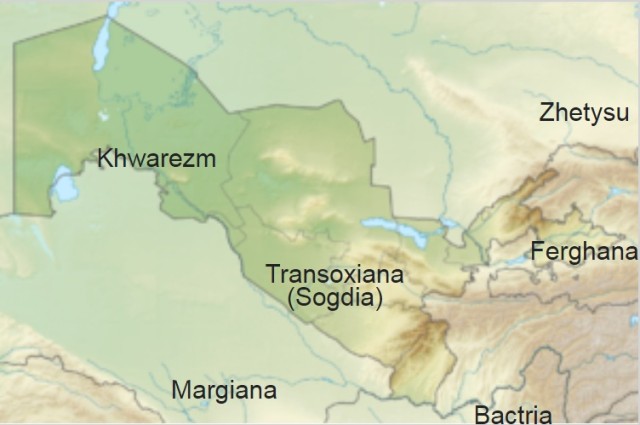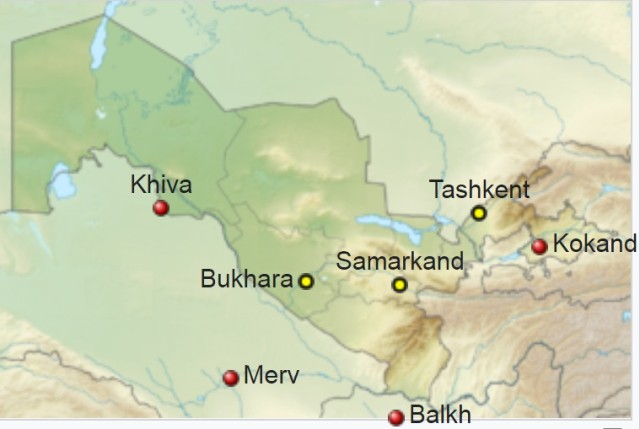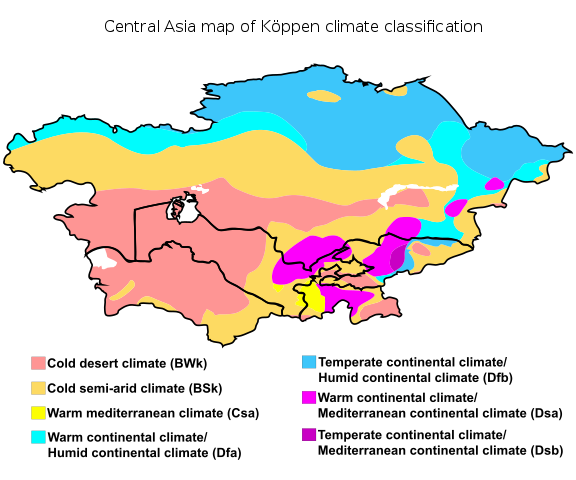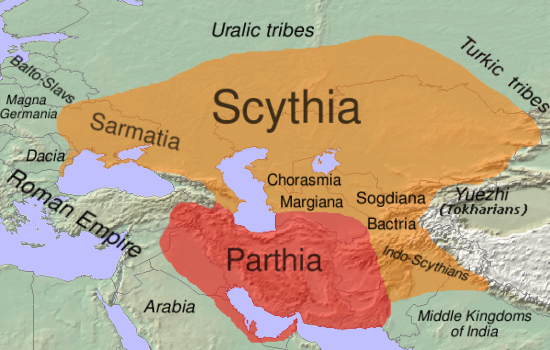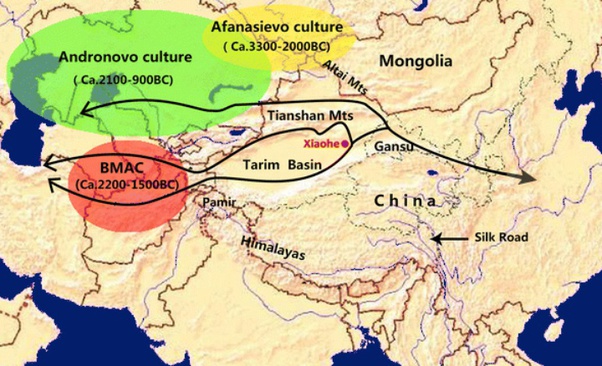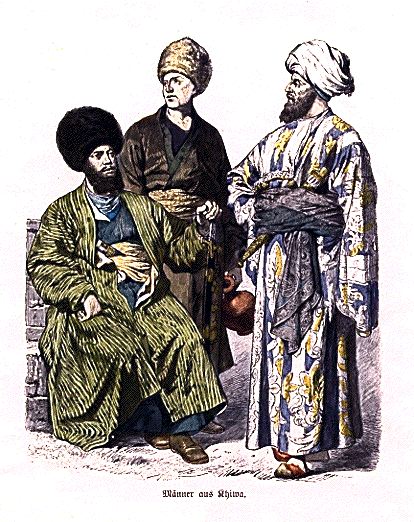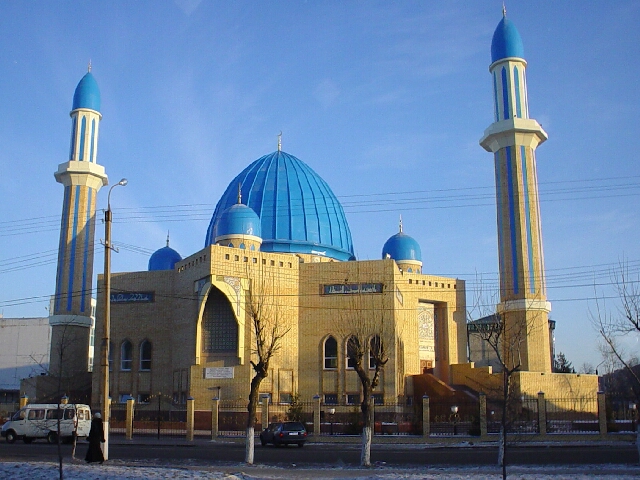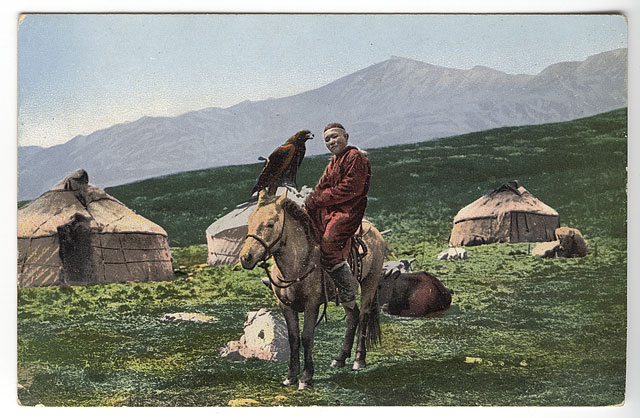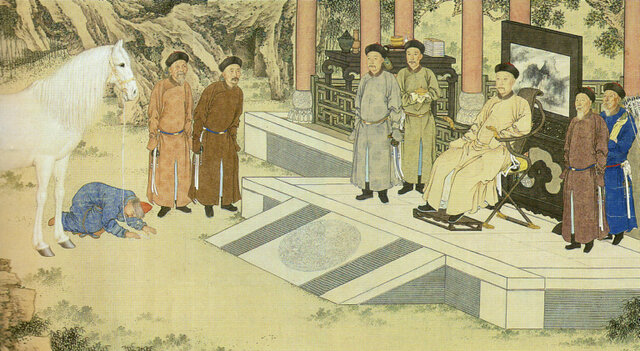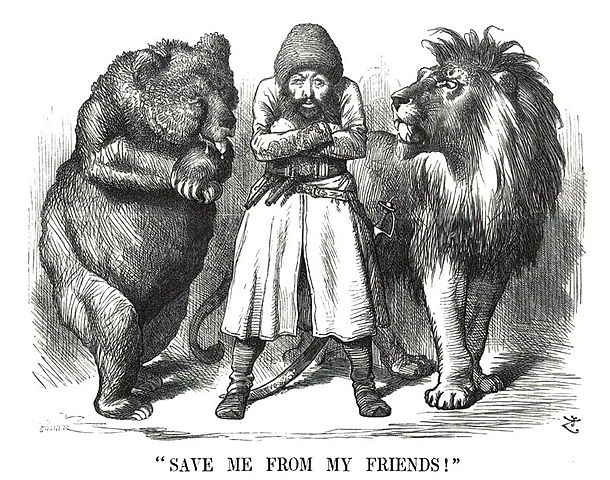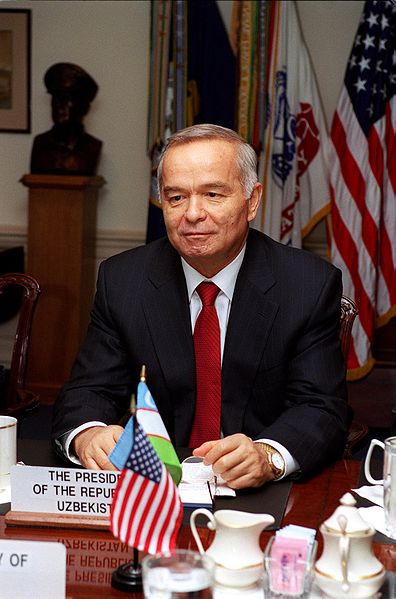
| CENTRAL ASIA
Central Asia Countries : Kazakhstan, Kyrgyzstan, Tajikistan, Turkmenistan, Uzbekistan
Official languages : Karakalpak, Kazakh, Kyrgyz, Russian, Tajik, Turkmen, Uzbek
Central Asia is a region in Asia which stretches from the Caspian Sea in the west to China and Mongolia in the east, and from Afghanistan and Iran in the south to Russia in the north. The region consists of the former Soviet republics of Kazakhstan, Kyrgyzstan, Tajikistan, Turkmenistan, and Uzbekistan. It is also colloquially referred to as "the stans" as the countries generally considered to be within the region all have names ending with the Persian suffix "-stan", meaning "land of". Various neighbouring areas are sometimes also considered part of the region.
Central Asia has historically been closely tied to its nomadic peoples and the Silk Road. It has acted as a crossroads for the movement of people, goods, and ideas between Europe, West Asia, South Asia, and East Asia. The Silk Road connected Muslim lands with the people of Europe, South Asia, and East Asia. This crossroads position has intensified the conflict between tribalism and traditionalism and modernization. The age of the Timurid Renaissance began from today's Uzbekistan.
In the pre-Islamic and early Islamic times, Central Asia was predominantly Iranian, populated by Eastern Iranian-speaking Bactrians, Sogdians, Chorasmians and the semi-nomadic Scythians and Dahae. After expansion by Turkic peoples, Central Asia also became the homeland for the Kazakhs, Uzbeks, Tatars, Turkmen, Kyrgyz and Uyghurs; Turkic languages largely replaced the Iranian languages spoken in the area.
From the mid-19th century until almost the end of the 20th century, most of Central Asia was part of the Russian Empire and later the Soviet Union, both Slavic-majority countries and the five former Soviet "-stans" are still home to about 7 million ethnic Russians and 500,000 Ukrainians. Stalinist-era forced deportation policies also mean that over 300,000 Koreans and 170,000 ethnic Germans continue to reside in the region.
Central Asia (2019) has a population of about 72 million, consisting of five republics: Kazakhstan (pop. 18 million), Kyrgyzstan (6 million), Tajikistan (9 million), Turkmenistan (6 million), and Uzbekistan (33 million).
Definitions :
Political map of Central Asia (2000)
Three sets of possible boundaries for the region
Expanded
definition of Central Asia. Core definition that includes the five
post-Soviet states in dark green. Afghanistan, the most commonly
added country to Central Asia, in green. Regions that are sometimes
considered part of Central Asia in light green.
Only Humboldt does mentions some geographic features of this region which include the Caspian Sea in the west the Altai mountains in the north and the Hindu Kush and Pamir mountains in the South. The Prussian geographer did not give an eastern border for the region. Von Humboldt's legacy on Central Asia is still seen in the present, He has a university named after himself which provides the "Central Asian Studies" (Based on the wider Central Asia definition). The Russian Geographer Nicolay Khanykoff questioned the latitudinal definition of Central Asia. Khanykoff himself preferred a physical definition of the region which is all countries located in this region being landlocked from water. These definitions mostly included the countries: Afghanistan, Tadjikistan, Uzbekistan, Turkmenistan, Kyrgyzstan, Khorasan and East Turkestan (Xinjiang).
However, the Russian culture has two distinct terms: Srednyaya Aziya or "Middle Asia", the narrower definition, which includes only those traditionally non-Slavic, Central Asian lands that were incorporated within those borders of historical Russia and Tsentralnaya Aziya or "Central Asia", the wider definition, which includes Central Asian lands that have never been part of historical Russia. The latter definition includes Afghanistan and East Turkestan.
The most limited definition was the official one of the Soviet Union, which defined Middle Asia as consisting solely of Uzbekistan, Turkmenistan, Tajikistan and Kyrgyzstan, hence omitting Kazakhstan. This definition was also often used outside the USSR during this period. Soon after the dissolution of the Soviet Union in 1991, the leaders of the four former Soviet Central Asian Republics met in Tashkent and declared that the definition of Central Asia should include Kazakhstan as well as the original four included by the Soviets. Since then, this has become the most common definition of Central Asia.
The UNESCO History of the Civilizations of Central Asia, published in 1992, defines the region as "Afghanistan, northeastern Iran, northern and central Pakistan, northern India, western China, Mongolia and the former Soviet Central Asian republics."
An alternative method is to define the region based on ethnicity, and in particular, areas populated by Eastern Turkic, Eastern Iranian, or Mongolian peoples. These areas include Xinjiang Uyghur Autonomous Region, the Turkic regions of southern Siberia, the five republics, and Afghan Turkestan. Afghanistan as a whole, the northern and western areas of Pakistan and the Kashmir Valley of India may also be included. The Tibetans and Ladakhi are also included. Most of the mentioned peoples are considered the "indigenous" peoples of the vast region. Central Asia is sometimes referred to as Turkestan.
There are several places that claim to be the geographic center of Asia, for example Kyzyl, the capital of Tuva in the Russian Federation, and a village 320 km (200 mi) north of Ürümqi, the capital of the Xinjiang region of China.
Geography :
On the southern shore of Issyk Kul lake, Issyk Kul Region Central Asia is an extremely large region of varied geography, including high passes and mountains (Tian Shan), vast deserts (Kyzyl Kum, Taklamakan), and especially treeless, grassy steppes. The vast steppe areas of Central Asia are considered together with the steppes of Eastern Europe as a homogeneous geographical zone known as the Eurasian Steppe.
Much of the land of Central Asia is too dry or too rugged for farming. The Gobi desert extends from the foot of the Pamirs, 77° E, to the Great Khingan (Da Hinggan) Mountains, 116°–118° E.
Central Asia has the following geographic extremes :
•
The world's northern most desert (sand dunes), at Buurug Deliin
Els, Mongolia, 50°18' N.
Major rivers of the region include the Amu Darya, the Syr Darya, Irtysh, the Hari River and the Murghab River. Major bodies of water include the Aral Sea and Lake Balkhash, both of which are part of the huge west-central Asian endorheic basin that also includes the Caspian Sea.
Both of these bodies of water have shrunk significantly in recent decades due to diversion of water from rivers that feed them for irrigation and industrial purposes. Water is an extremely valuable resource in arid Central Asia and can lead to rather significant international disputes.
Historical regions :
Historical regions of Central Asia on a map of Kazakhstan
Historical Regions of Central Asia on a map of Uzbekistan
Historic cities of Central Asia Kokand is one of the many towns that rose and fell in the Ferghana Valley Central Asia is bounded on the north by the forests of Siberia. The northern half of Central Asia (Kazakhstan) is the middle part of the Eurasian steppe. Westward the Kazakh steppe merges into the Russian-Ukrainian steppe and eastward into the steppes and deserts of Dzungaria and Mongolia. Southward the land becomes increasingly dry and the nomadic population increasingly thin. The south supports areas of dense population and cities wherever irrigation is possible. The main irrigated areas are along the eastern mountains, along the Oxus and Jaxartes Rivers and along the north flank of the Kopet Dagh near the Persian border. East of the Kopet Dagh is the important oasis of Merv and then a few places in Afghanistan like Herat and Balkh. Two projections of the Tian Shan create three "bays" along the eastern mountains. The largest, in the north, is eastern Kazakhstan, traditionally called Jetysu or Semirechye which contains Lake Balkhash. In the center is the small but densely-populated Ferghana valley. In the south is Bactria, later called Tocharistan, which is bounded on the south by the Hindu Kush mountains of Afghanistan. The Syr Darya (Jaxartes) rises in the Ferghana valley and the Amu Darya (Oxus) rises in Bactria. Both flow northwest into the Aral Sea. Where the Oxus meets the Aral Sea it forms a large delta called Khwarazm and later the Khanate of Khiva. North of the Oxus is the less-famous but equally important Zarafshan River which waters the great trading cities of Bokhara and Samarkand. The other great commercial city was Tashkent northwest of the mouth of the Ferghana valley. The land immediately north of the Oxus was called Transoxiana and also Sogdia, especially when referring to the Sogdian merchants who dominated the silk road trade.
To the east, Dzungaria and the Tarim Basin were united into the Chinese province of Xinjiang about 1759. Caravans from China usually went along the north or south side of the Tarim basin and joined at Kashgar before crossing the mountains northwest to Ferghana or southwest to Bactria. A minor branch of the silk road went north of the Tian Shan through Dzungaria and Zhetysu before turning southwest near Tashkent. Nomadic migrations usually moved from Mongolia through Dzungaria before turning southwest to conquer the settled lands or continuing west toward Europe.
The Kyzyl Kum Desert or semi-desert is between the Oxus and Jaxartes, and the Karakum Desert is between the Oxus and Kopet Dagh in Turkmenistan. Khorasan meant approximately northeast Persia and northern Afghanistan. Margiana was the region around Merv. The Ustyurt Plateau is between the Aral and Caspian Seas.
To the southwest, across the Kopet Dagh, lies Persia. From here Persian and Islamic civilization penetrated Central Asia and dominated its high culture until the Russian conquest. In the southeast is the route to India. In early times Buddhism spread north and throughout much of history warrior kings and tribes would move southeast to establish their rule in northern India. Most nomadic conquerors entered from the northeast. After 1800 western civilization in its Russian and Soviet form penetrated from the northwest.
Names
of historical regions :
Central Asia map of Köppen climate classification Because Central Asia is not buffered by a large body of water, temperature fluctuations are often severe, excluding the hot, sunny summer months. In most areas the climate is dry and continental, with hot summers and cool to cold winters, with occasional snowfall. Outside high-elevation areas, the climate is mostly semi-arid to arid. In lower elevations, summers are hot with blazing sunshine. Winters feature occasional rain and/or snow from low-pressure systems that cross the area from the Mediterranean Sea. Average monthly precipitation is extremely low from July to September, rises in autumn (October and November) and is highest in March or April, followed by swift drying in May and June. Winds can be strong, producing dust storms sometimes, especially toward the end of the dry season in September and October. Specific cities that exemplify Central Asian climate patterns include Tashkent and Samarkand, Uzbekistan, Ashgabat, Turkmenistan, and Dushanbe, Tajikistan, the last of these representing one of the wettest climates in Central Asia, with an average annual precipitation of over 22 inches.
Biogeographically, Central Asia is part of the Palearctic realm. The largest biome in Central Asia is the temperate grasslands, savannas, and shrublands biome. Central Asia also contains the montane grasslands and shrublands, deserts and xeric shrublands and temperate coniferous forests biomes.
History
:
Relations between the steppe nomads and the settled people in and around Central Asia were long marked by conflict. The nomadic lifestyle was well suited to warfare, and the steppe horse riders became some of the most militarily potent people in the world, limited only by their lack of internal unity. Any internal unity that was achieved was most probably due to the influence of the Silk Road, which traveled along Central Asia. Periodically, great leaders or changing conditions would organize several tribes into one force and create an almost unstoppable power. These included the Hun invasion of Europe, the Wu Hu attacks on China and most notably the Mongol conquest of much of Eurasia.
Geographical extent of Iranian influence in the 1st century BC. Scythia (mostly Eastern Iranian) is shown in orange During pre-Islamic and early Islamic times, southern Central Asia was inhabited predominantly by speakers of Iranian languages. Among the ancient sedentary Iranian peoples, the Sogdians and Chorasmians played an important role, while Iranian peoples such as Scythians and the later on Alans lived a nomadic or semi-nomadic lifestyle. The well-preserved Tarim mummies with Caucasoid features have been found in the Tarim Basin.
Tarim Basin
Uzbek men from Khiva, ca. 1861 – 1880 The main migration of Turkic peoples occurred between the 5th and 10th centuries, when they spread across most of Central Asia. The Tang Chinese were defeated by the Arabs at the battle of Talas in 751, marking the end of the Tang Dynasty's western expansion. The Tibetan Empire would take the chance to rule portion of Central Asia along with South Asia.
During the 13th and 14th centuries, the Mongols conquered and ruled the largest contiguous empire in recorded history. Most of Central Asia fell under the control of the Chagatai Khanate.
The dominance of the nomads ended in the 16th century, as firearms allowed settled peoples to gain control of the region. Russia, China, and other powers expanded into the region and had captured the bulk of Central Asia by the end of the 19th century. After the Russian Revolution, the western Central Asian regions were incorporated into the Soviet Union. The eastern part of Central Asia, known as East Turkestan or Xinjiang, was incorporated into the People's Republic of China. Mongolia remained independent but became a Soviet satellite state. Afghanistan remained relatively independent of major influence by the USSR until the Saur Revolution of 1978.
The Soviet areas of Central Asia saw much industrialization and construction of infrastructure, but also the suppression of local cultures, hundreds of thousands of deaths from failed collectivization programs, and a lasting legacy of ethnic tensions and environmental problems. Soviet authorities deported millions of people, including entire nationalities, from western areas of the USSR to Central Asia and Siberia. According to Touraj Atabaki and Sanjyot Mehendale, "From 1959 to 1970, about two million people from various parts of the Soviet Union migrated to Central Asia, of which about one million moved to Kazakhstan."
With the collapse of the Soviet Union, five countries gained independence. In nearly all the new states, former Communist Party officials retained power as local strongmen. None of the new republics could be considered functional democracies in the early days of independence, although in recent years Kyrgyzstan, Kazakhstan and Mongolia have made further progress towards more open societies, unlike Uzbekistan, Tajikistan, and Turkmenistan, which have maintained many Soviet-style repressive tactics.
Culture
:
Mosque in Petropavlovsk, Kazakhstan At the crossroads of Asia, shamanistic practices live alongside Buddhism. Thus, Yam, Lord of Death, was revered in Tibet as a spiritual guardian and judge.
Mongolian Buddhism, in particular, was influenced by Tibetan Buddhism. The Qianlong Emperor of Qing China in the 18th century was Tibetan Buddhist and would sometimes travel from Beijing to other cities for personal religious worship.
Saadi Shirazi is welcomed by a youth from Kashgar during a forum in Bukhara Central Asia also has an indigenous form of improvisational oral poetry that is over 1000 years old. It is principally practiced in Kyrgyzstan and Kazakhstan by akyns, lyrical improvisationalists. They engage in lyrical battles, the aitysh or the alym sabak. The tradition arose out of early bardic oral historians. They are usually accompanied by a stringed instrument—in Kyrgyzstan, a three-stringed komuz, and in Kazakhstan, a similar two-stringed instrument, the dombra.
Photography in Central Asia began to develop after 1882, when a Russian Mennonite photographer named Wilhelm Penner moved to the Khanate of Khiva during the Mennonite migration to Central Asia led by Claas Epp, Jr. Upon his arrival to Khanate of Khiva, Penner shared his photography skills with a local student Khudaybergen Divanov, who later became the founder of Uzbek photography.
Mausoleum of Khoja Ahmed Yasawi in Hazrat-e Turkestan, Kazakhstan. Timurid architecture consisted of Persian art Some also learn to sing the Manas, Kyrgyzstan's epic poem (those who learn the Manas exclusively but do not improvise are called manaschis). During Soviet rule, akyn performance was co-opted by the authorities and subsequently declined in popularity. With the fall of the Soviet Union, it has enjoyed a resurgence, although akyns still do use their art to campaign for political candidates. A 2005 The Washington Post article proposed a similarity between the improvisational art of akyns and modern freestyle rap performed in the West.
As a consequence of Russian colonization, European fine arts – painting, sculpture and graphics – have developed in Central Asia. The first years of the Soviet regime saw the appearance of modernism, which took inspiration from the Russian avant-garde movement. Until the 1980s, Central Asian arts had developed along with general tendencies of Soviet arts. In the 90s, arts of the region underwent some significant changes. Institutionally speaking, some fields of arts were regulated by the birth of the art market, some stayed as representatives of official views, while many were sponsored by international organizations. The years of 1990–2000 were times for the establishment of contemporary arts. In the region, many important international exhibitions are taking place, Central Asian art is represented in European and American museums, and the Central Asian Pavilion at the Venice Biennale has been organized since 2005.
Sports :
Kazakh man on a horse with golden eagle Equestrian sports are traditional in Central Asia, with disciplines like endurance riding, buzkashi, dzhigit and kyz kuu.
The traditional game of Buzkashi is played throughout the Central Asian region, the countries sometimes organize Buzkashi competition amongst each other. The First regional competition among the Central Asian countries, Russia, Chinese Xinjiang and Turkey was held in 2013. The first world title competition was played in 2017 and won by Kazakhstan.
Association football is popular across Central Asia. Most countries are members of the Central Asian Football Association, a region of the Asian Football Confederation. However, Kazakhstan is a member of the UEFA.
Wrestling is popular across Central Asia, with Kazakhstan having claimed 14 Olympic medals, Uzbekistan seven, and Kyrgyzstan three. As former Soviet states, Central Asian countries have been successful in gymnastics.
Mixed Martial Arts is one of more common sports in Central Asia, Kyrgyz athlete Valentina Shevchenko holding the UFC Flyweight Champion title.
Cricket is the most popular sport in Afghanistan. The Afghanistan national cricket team, first formed in 2001, has claimed wins over Bangladesh, West Indies and Zimbabwe.
Notable Kazakh competitors include cyclists Alexander Vinokourov and Andrey Kashechkin, boxer Vassiliy Jirov and Gennady Golovkin, runner Olga Shishigina, decathlete Dmitriy Karpov, gymnast Aliya Yussupova, judoka Askhat Zhitkeyev and Maxim Rakov, skier Vladimir Smirnov, weightlifter Ilya Ilyin, and figure skaters Denis Ten and Elizabet Tursynbaeva.
Notable Uzbekistani competitors include cyclist Djamolidine Abdoujaparov, boxer Ruslan Chagaev, canoer Michael Kolganov, gymnast Oksana Chusovitina, tennis player Denis Istomin, chess player Rustam Kasimdzhanov, and figure skater Misha Ge.
Economy :
Since gaining independence in the early 1990s, the Central Asian republics have gradually been moving from a state-controlled economy to a market economy. The ultimate aim is to emulate the Asian Tigers by becoming the local equivalent, Central Asian snow leopards. However, reform has been deliberately gradual and selective, as governments strive to limit the social cost and ameliorate living standards. All five countries are implementing structural reforms to improve competitiveness. Kazakhstan is the only CIS country to be included in the 2020and 2019 IWB World Competitiveness rankings. In particular, they have been modernizing the industrial sector and fostering the development of service industries through business-friendly fiscal policies and other measures, to reduce the share of agriculture in GDP. Between 2005 and 2013, the share of agriculture dropped in all but Tajikistan, where it increased while industry decreased. The fastest growth in industry was observed in Turkmenistan, whereas the services sector progressed most in the other four countries.
Public policies pursued by Central Asian governments focus on buffering the political and economic spheres from external shocks. This includes maintaining a trade balance, minimizing public debt and accumulating national reserves. They cannot totally insulate themselves from negative exterior forces, however, such as the persistently weak recovery of global industrial production and international trade since 2008. Notwithstanding this, they have emerged relatively unscathed from the global financial crisis of 2008–2009. Growth faltered only briefly in Kazakhstan, Tajikistan and Turkmenistan and not at all in Uzbekistan, where the economy grew by more than 7% per year on average between 2008 and 2013. Turkmenistan achieved unusually high 14.7% growth in 2011. Kyrgyzstan's performance has been more erratic but this phenomenon was visible well before 2008.
The republics which have fared best benefitted from the commodities boom during the first decade of the 2000s. Kazakhstan and Turkmenistan have abundant oil and natural gas reserves and Uzbekistan's own reserves make it more or less self-sufficient. Kyrgyzstan, Tajikistan and Uzbekistan all have gold reserves and Kazakhstan has the world's largest uranium reserves. Fluctuating global demand for cotton, aluminium and other metals (except gold) in recent years has hit Tajikistan hardest, since aluminium and raw cotton are its chief exports - the Tajik Aluminium Company is the country's primary industrial asset. In January 2014, the Minister of Agriculture announced the government's intention to reduce the acreage of land cultivated by cotton to make way for other crops. Uzbekistan and Turkmenistan are major cotton exporters themselves, ranking fifth and ninth respectively worldwide for volume in 2014.
Although both exports and imports have grown significantly over the past decade, Central Asian republics countries remain vulnerable to economic shocks, owing to their reliance on exports of raw materials, a restricted circle of trading partners and a negligible manufacturing capacity. Kyrgyzstan has the added disadvantage of being considered resource poor, although it does have ample water. Most of its electricity is generated by hydropower.
The Kyrgyz economy was shaken by a series of shocks between 2010 and 2012. In April 2010, President Kurmanbek Bakiyev was deposed by a popular uprising, with former minister of foreign affairs Roza Otunbayeva assuring the interim presidency until the election of Almazbek Atambayev in November 2011. Food prices rose two years in a row and, in 2012, production at the major Kumtor gold mine fell by 60% after the site was perturbed by geological movements. According to the World Bank, 33.7% of the population was living in absolute poverty [clarification needed] in 2010 and 36.8% a year later.
Despite high rates of economic growth in recent years, GDP per capita in Central Asia was higher than the average for developing countries only in Kazakhstan in 2013 (PPP$23,206) and Turkmenistan (PPP$14 201). It dropped to PPP$5,167 for Uzbekistan, home to 45% of the region's population, and was even lower for Kyrgyzstan and Tajikistan.
Kazakhstan leads the Central Asian region in terms of foreign direct investments. The Kazakh economy accounts for more than 70% of all the investment attracted in Central Asia.
In
terms of the economic influence of big powers, China is viewed as
one of the key economic players in Central Asia, especially after
Beijing launched its grand development strategy known as the Belt
and Road Initiative (BRI) in 2013.
Kazakhstan and Turkmenistan are also building technology parks as part of their drive to modernize infrastructure. In 2011, construction began of a technopark in the village of Bikrova near Ashgabat, the Turkmen capital. It will combine research, education, industrial facilities, business incubators and exhibition centres. The technopark will house research on alternative energy sources (sun, wind) and the assimilation of nanotechnologies. Between 2010 and 2012, technological parks were set up in the east, south and north Kazakhstan oblasts (administrative units) and in the capital, Nur-Sultan. A Centre for Metallurgy was also established in the east Kazakhstan oblast, as well as a Centre for Oil and Gas Technologies which will be part of the planned Caspian Energy Hub. In addition, the Centre for Technology Commercialization has been set up in Kazakhstan as part of the Parasat National Scientific and Technological Holding, a joint stock company established in 2008 that is 100% state-owned.
The centre supports research projects in technology marketing, intellectual property protection, technology licensing contracts and start-ups. The centre plans to conduct a technology audit in Kazakhstan and to review the legal framework regulating the commercialization of research results and technology.
Countries are seeking to augment the efficiency of traditional extractive sectors but also to make greater use of information and communication technologies and other modern technologies, such as solar energy, to develop the business sector, education and research. In March 2013, two research institutes were created by presidential decree to foster the development of alternative energy sources in Uzbekistan, with funding from the Asian Development Bank and other institutions: the SPU Physical-Technical Institute (Physics Sun Institute) and the International Solar Energy Institute. Three universities have been set up since 2011 to foster competence in strategic economic areas: Nazarbayev University in Kazakhstan (first intake in 2011), an international research university, Inha University in Uzbekistan (first intake in 2014), specializing in information and communication technologies, and the International Oil and Gas University in Turkmenistan (founded in 2013). Kazakhstan and Uzbekistan are both generalizing the teaching of foreign languages at school, in order to facilitate international ties. Kazakhstan and Uzbekistan have both adopted the three-tier bachelor's, master's and PhD degree system, in 2007 and 2012 respectively, which is gradually replacing the Soviet system of Candidates and Doctors of Science. In 2010, Kazakhstan became the only Central Asian member of the Bologna Process, which seeks to harmonize higher education systems in order to create a European Higher Education Area.
Financial
investment in research :
Kazakhstan
is the only country where the business enterprise and private non-profit
sectors make any significant contribution to research and development
– but research intensity overall is low in Kazakhstan: just
0.18% of GDP in 2013. Moreover, few industrial enterprises conduct
research in Kazakhstan. Only one in eight (12.5%) of the country's
manufacturing firms were active in innovation in 2012, according
to a survey by the UNESCO Institute for Statistics. Enterprises
prefer to purchase technological solutions that are already embodied
in imported machinery and equipment. Just 4% of firms purchase the
license and patents that come with this technology. Nevertheless,
there appears to be a growing demand for the products of research,
since enterprises spent 4.5 times more on scientific and technological
services in 2008 than in 1997.
Kazakhstan is the only Central Asian country where the business enterprise and private non-profit sectors make any significant contribution to research and development. Uzbekistan is in a particularly vulnerable position, with its heavy reliance on higher education: three-quarters of researchers were employed by the university sector in 2013 and just 6% in the business enterprise sector. With most Uzbek university researchers nearing retirement, this imbalance imperils Uzbekistan's research future. Almost all holders of a Candidate of Science, Doctor of Science or PhD are more than 40 years old and half are aged over 60; more than one in three researchers (38.4%) holds a PhD degree, or its equivalent, the remainder holding a bachelor's or master's degree.
Kazakhstan, Kyrgyzstan and Uzbekistan have all maintained a share of women researchers above 40% since the fall of the Soviet Union. Kazakhstan has even achieved gender parity, with Kazakh women dominating medical and health research and representing some 45–55% of engineering and technology researchers in 2013. In Tajikistan, however, only one in three scientists (34%) was a woman in 2013, down from 40% in 2002. Although policies are in place to give Tajik women equal rights and opportunities, these are underfunded and poorly understood. Turkmenistan has offered a state guarantee of equality for women since a law adopted in 2007 but the lack of available data makes it impossible to draw any conclusions as to the law's impact on research. As for Turkmenistan, it does not make data available on higher education, research expenditure or researchers.
Research output :
The number of scientific papers published in Central Asia grew by almost 50% between 2005 and 2014, driven by Kazakhstan, which overtook Uzbekistan over this period to become the region's most prolific scientific publisher, according to Thomson Reuters' Web of Science (Science Citation Index Expanded). Between 2005 and 2014, Kazakhstan's share of scientific papers from the region grew from 35% to 56%. Although two-thirds of papers from the region have a foreign co-author, the main partners tend to come from beyond Central Asia, namely the Russian Federation, USA, German, United Kingdom and Japan.
Five Kazakh patents were registered at the US Patent and Trademark Office between 2008 and 2013, compared to three for Uzbek inventors and none at all for the other three Central Asian republics, Kyrgyzstan, Tajikistan and Turkmenistan.
Kazakhstan is Central Asia's main trader in high-tech products. Kazakh imports nearly doubled between 2008 and 2013, from US$2.7 billion to US$5.1 billion. There has been a surge in imports of computers, electronics and telecommunications; these products represented an investment of US$744 million in 2008 and US$2.6 billion five years later. The growth in exports was more gradual – from US$2.3 billion to US$3.1 billion – and dominated by chemical products (other than pharmaceuticals), which represented two-thirds of exports in 2008 (US$1.5 billion) and 83% (US$2.6 billion) in 2013.
International
cooperation :
Kazakhstan is also one of the three founding members of the Eurasian Economic Union in 2014, along with Belarus and the Russian Federation. Armenia and Kyrgyzstan have since joined this body. As co-operation among the member states in science and technology is already considerable and well-codified in legal texts, the Eurasian Economic Union is expected to have a limited additional impact on co-operation among public laboratories or academia but it should encourage business ties and scientific mobility, since it includes provision for the free circulation of labour and unified patent regulations.
Kazakhstan and Tajikistan participated in the Innovative Biotechnologies Programme (2011–2015) launched by the Eurasian Economic Community, the predecessor of the Eurasian Economic Union, The programme also involved Belarus and the Russian Federation. Within this programme, prizes were awarded at an annual bio-industry exhibition and conference. In 2012, 86 Russian organizations participated, plus three from Belarus, one from Kazakhstan and three from Tajikistan, as well as two scientific research groups from Germany. At the time, Vladimir Debabov, Scientific Director of the Genetika State Research Institute for Genetics and the Selection of Industrial Micro-organisms in the Russian Federation, stressed the paramount importance of developing bio-industry. 'In the world today, there is a strong tendency to switch from petrochemicals to renewable biological sources,' he said. 'Biotechnology is developing two to three times faster than chemicals.'
Kazakhstan also participated in a second project of the Eurasian Economic Community, the establishment of the Centre for Innovative Technologies on 4 April 2013, with the signing of an agreement between the Russian Venture Company (a government fund of funds), the Kazakh JSC National Agency and the Belarusian Innovative Foundation. Each of the selected projects is entitled to funding of US$3–90 million and is implemented within a public–private partnership. The first few approved projects focused on supercomputers, space technologies, medicine, petroleum recycling, nanotechnologies and the ecological use of natural resources. Once these initial projects have spawned viable commercial products, the venture company plans to reinvest the profits in new projects. This venture company is not a purely economic structure; it has also been designed to promote a common economic space among the three participating countries.
Four of the five Central Asian republics have also been involved in a project launched by the European Union in September 2013, IncoNet CA. The aim of this project is to encourage Central Asian countries to participate in research projects within Horizon 2020, the European Union's eighth research and innovation funding programme. The focus of this research projects is on three societal challenges considered as being of mutual interest to both the European Union and Central Asia, namely: climate change, energy and health. IncoNet CA builds on the experience of earlier projects which involved other regions, such as Eastern Europe, the South Caucasus and the Western Balkans. IncoNet CA focuses on twinning research facilities in Central Asia and Europe. It involves a consortium of partner institutions from Austria, the Czech Republic, Estonia, Germany, Hungary, Kazakhstan, Kyrgyzstan, Poland, Portugal, Tajikistan, Turkey and Uzbekistan. In May 2014, the European Union launched a 24-month call for project applications from twinned institutions – universities, companies and research institutes – for funding of up to €10, 000 to enable them to visit one another's facilities to discuss project ideas or prepare joint events like workshops.
The International Science and Technology Center (ISTC) was established in 1992 by the European Union, Japan, the Russian Federation and the US to engage weapons scientists in civilian research projects and to foster technology transfer. ISTC branches have been set up in the following countries party to the agreement: Armenia, Belarus, Georgia, Kazakhstan, Kyrgyzstan and Tajikistan. The headquarters of ISTC were moved to Nazarbayev University in Kazakhstan in June 2014, three years after the Russian Federation announced its withdrawal from the centre.
Kyrgyzstan, Tajikistan and Kazakhstan have been members of the World Trade Organization since 1998, 2013 and 2015 respectively.
Demographics :
White areas are thinly-populated semi-desert.
Uzbek children in Samarkand
Children in Afghanistan By a broad definition including Mongolia and Afghanistan, more than 90 million people live in Central Asia, about 2% of Asia's total population. Of the regions of Asia, only North Asia has fewer people. It has a population density of 9 people per km2, vastly less than the 80.5 people per km2 of the continent as a whole.
Languages
:
The languages of the majority of the inhabitants of the former Soviet Central Asian Republics belong to the Turkic language group. Turkmen, is mainly spoken in Turkmenistan, and as a minority language in Afghanistan, Russia, Iran and Turkey. Kazakh and Kyrgyz are related languages of the Kypchak group of Turkic languages and are spoken throughout Kazakhstan, Kyrgyzstan, and as a minority language in Tajikistan, Afghanistan and Xinjiang. Uzbek and Uyghur are spoken in Uzbekistan, Tajikistan, Kyrgyzstan, Afghanistan and Xinjiang.
The Turkic languages may belong to a larger, but controversial, Altaic language family, which includes Mongolian. Mongolian is spoken throughout Mongolia and into Buryatia, Kalmyk, Tuva, Inner Mongolia, and Xinjiang.
Middle Iranian languages were once spoken throughout Central Asia, such as the once prominent Sogdian, Khwarezmian, Bactrian and Scythian, which are now extinct and belonged to the Eastern Iranian family. The Eastern Iranian Pashto language is still spoken in Afghanistan and northwestern Pakistan. Other minor Eastern Iranian languages such as Shughni, Munji, Ishkashimi, Sarikoli, Wakhi, Yaghnobi and Ossetic are also spoken at various places in Central Asia. Varieties of Persian are also spoken as a major language in the region, locally known as Dari (in Afghanistan), Tajik (in Tajikistan and Uzbekistan), and Bukhori (by the Bukharan Jews of Central Asia).
Tocharian, another Indo-European language group, which was once predominant in oases on the northern edge of the Tarim Basin of Xinjiang, is now extinct.
Other language groups include the Tibetic languages, spoken by around six million people across the Tibetan Plateau and into Qinghai, Sichuan, Ladakh and Baltistan, and the Nuristani languages of northeastern Afghanistan. Dardic languages, such as Shina, Kashmiri, Pashayi and Khowar, are also spoken in eastern Afghanistan, the Gilgit-Baltistan and Khyber Pakhtunkhwa of Pakistan and the disputed territory of Kashmir. Korean is spoken by the Koryo-saram minority, mainly in Kazakhstan and Uzbekistan.
Religions :
This
section does not cite any sources.
Buddhism and Zoroastrianism were the major faiths in Central Asia prior to the arrival of Islam. Zoroastrian influence is still felt today in such celebrations as Nowruz, held in all five of the Central Asian states.
Buddhism was a prominent religion in Central Asia prior to the arrival of Islam, and the transmission of Buddhism along the Silk Road eventually brought the religion to China. Amongst the Turkic peoples, Tengrism was the leading religious form before the onslaught of Islam. Tibetan Buddhism is most common in Tibet, Mongolia, Ladakh, and the southern Russian regions of Siberia.
The form of Christianity most practiced in the region in previous centuries was Nestorianism, but now the largest denomination is the Russian Orthodox Church, with many members in Kazakhstan, where about 25% of the population of 19 million identify as Christian, 17% in Uzbekistan and 5% in Kyrgyzstan.
The Bukharan Jews were once a sizable community in Uzbekistan and Tajikistan, but nearly all have emigrated since the dissolution of the Soviet Union.
In Siberia, shaministic practices persist, including forms of divination such as Kumalak.
Contact and migration with Han people from China has brought Confucianism, Daoism, Mahayana Buddhism, and other Chinese folk beliefs into the region.
Geostrategy :
Political cartoon from the period of the Great Game showing the Afghan Amir Sher Ali with his "friends" Imperial Russia and the United Kingdom (1878)
Islam Karimov (President, Uzbekistan) in the Pentagon, March 2002 Central Asia has long been a strategic location merely because of its proximity to several great powers on the Eurasian landmass. The region itself never held a dominant stationary population nor was able to make use of natural resources. Thus, it has rarely throughout history become the seat of power for an empire or influential state. Central Asia has been divided, redivided, conquered out of existence, and fragmented time and time again. Central Asia has served more as the battleground for outside powers than as a power in its own right.
Central Asia had both the advantage and disadvantage of a central location between four historical seats of power. From its central location, it has access to trade routes to and from all the regional powers. On the other hand, it has been continuously vulnerable to attack from all sides throughout its history, resulting in political fragmentation or outright power vacuum, as it is successively dominated.
•
To the North, the steppe allowed for rapid mobility, first for nomadic
horseback warriors like the Huns and Mongols, and later for Russian
traders, eventually supported by railroads. As the Russian Empire
expanded to the East, it would also push down into Central Asia
towards the sea, in a search for warm water ports. The Soviet bloc
would reinforce dominance from the North and attempt to project
power as far south as Afghanistan.
•
Russia continues to dominate political decision-making throughout
the former SSRs; although, as other countries move into the area,
Russia's influence has begun to wane though Russia still maintains
military bases in Kyrgyzstan and Tajikistan.
The region, along with Russia, is also part of "the great pivot" as per the Heartland Theory of Halford Mackinder, which says that the power which controls Central Asia—richly endowed with natural resources—shall ultimately be the "empire of the world".
War
on Terror :
Afghanistan, which had served as a haven and source of support for Al-Qaeda under the protection of Mullah Omar and the Taliban, was the target of a U.S. invasion in 2001 and ongoing reconstruction and drug-eradication efforts. U.S. military bases have also been established in Uzbekistan and Kyrgyzstan, causing both Russia and the People's Republic of China to voice their concern over a permanent U.S. military presence in the region.
Western governments have accused Russia, China and the former Soviet republics of justifying the suppression of separatist movements, and the associated ethnics and religion with the War on Terror.
Major cultural, scientific and economic centres :
Nur-Sultan, Kazakhstan :
The capital and second largest city in Kazakhstan. After Kazakhstan gained its independence in 1991, the city and the region were renamed from Tselinograd to Aqmola. The name was often translated as "White Tombstone", but actually means "Holy Place" or "Holy Shrine". The "White Tombstone" literal translation was too appropriate for many visitors to escape notice in almost all guide books and travel accounts. In 1994, the city was designated as the future capital of the newly independent country and again renamed to the Astana after the capital was officially moved from Almaty in 1997. In 2019 the city was renamed one more time to Nur-Sultan to honor the resigned president.
Almaty, Kazakhstan :
It was the capital of Kazakhstan (and its predecessor, the Kazakh SSR) from 1929 to 1998. Despite losing its status as the capital, Almaty remains the major commercial center of Kazakhstan. It is a recognized financial center of Kazakhstan and the Central Asian region.
Bishkek, Kyrgyzstan :
The capital and the largest city of Kyrgyzstan. Bishkek is also the administrative center of Chuy Region, which surrounds the city, even though the city itself is not part of the region, but rather a region-level unit of Kyrgyzstan.
Dushanbe, Tajikistan :
The capital and largest city of Tajikistan. Dushanbe means "Monday" in Tajik and Persian, and the name reflects the fact that the city grew on the site of a village that originally was a popular Monday marketplace.
Ashgabat, Turkmenistan :
The capital and largest city of Turkmenistan. Ashgabat is a relatively young city, growing out of a village of the same name established by Russians in 1818. It is not far from the site of Nisa, the ancient capital of the Parthians, and it grew on the ruins of the Silk Road city of Konjikala, which was first mentioned as a wine-producing village in the 2nd century BCE and was leveled by an earthquake in the 1st century BCE (a precursor of the 1948 Ashgabat earthquake). Konjikala was rebuilt because of its advantageous location on the Silk Road, and it flourished until its destruction by Mongols in the 13th century CE. After that, it survived as a small village until the Russians took over in the 19th century.
Bukhara, Uzbekistan :
The nation's fifth-largest city and the capital of the Bukhara Region of Uzbekistan. Bukhara has been one of the main centers of Persian civilization from its early days in the 6th century BCE, and, since the 12th century CE, Turkic speakers gradually moved in. Its architecture and archaeological sites form one of the pillars of Central Asian history and art.
Kokand, Uzbekistan :
Kokand is a city in Fergana Region in eastern Uzbekistan, at the southwestern edge of the Fergana Valley. It has a population of 192,500 (1999 census estimate). Kokand is 228 km southeast of Tashkent, 115 km west of Andijan, and 88 km west of Fergana. It is nicknamed "City of Winds", or sometimes "Town of the Boar".
Samarkand, Uzbekistan :
The second largest city in Uzbekistan and the capital of Samarqand Region. The city is most noted for its central position on the Silk Road between China and the West, and for being an Islamic center for scholarly study. It was here that the ruler Ulugh Beg (1394 - 1449) built a gigantic astronomical observatory.
Tashkent, Uzbekistan :
The capital and largest city of Uzbekistan. In pre-Islamic and early Islamic times, the town and the region were known as Chach. Tashkent started as an oasis on the Chirchik River, near the foothills of the Golestan Mountains. In ancient times, this area contained Beitian, probably the summer "capital" of the Kangju confederacy.
Osh, Kyrgyzstan :
The second largest city of Kyrgyzstan. Osh is also the administrative center of Osh Region, which surrounds the city, even though the city itself is not part of the region, but rather a region-level unit of Kyrgyzstan.
Source :
https://en.wikipedia.org/ |
.svg.png)
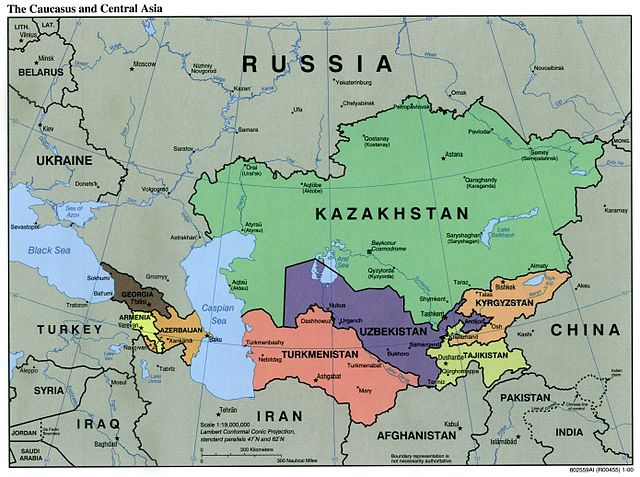

.svg.png)
.jpg)

